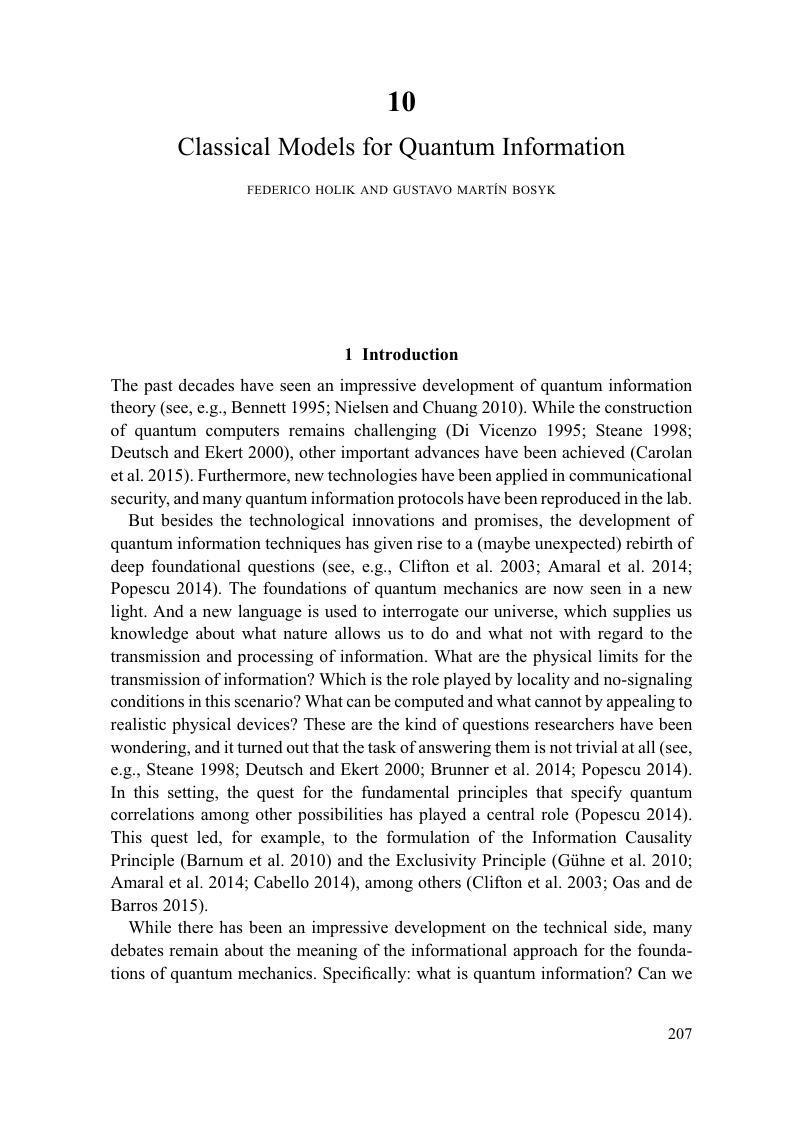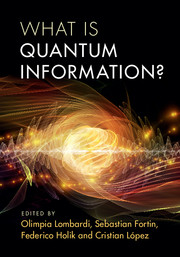Book contents
- What Is Quantum Information?
- What Is Quantum Information?
- Copyright page
- Contents
- Contributors
- Preface
- Introduction
- Part I The Concept of Information
- Part II Information and Quantum Mechanics
- Part III Probability, Correlations, and Information
- 8 On the Tension between Ontology and Epistemology in Quantum Probabilities
- 9 Inferential versus Dynamical Conceptions of Physics
- 10 Classical Models for Quantum Information
- 11 On the Relative Character of Quantum Correlations
- Index
- References
10 - Classical Models for Quantum Information
from Part III - Probability, Correlations, and Information
Published online by Cambridge University Press: 04 July 2017
- What Is Quantum Information?
- What Is Quantum Information?
- Copyright page
- Contents
- Contributors
- Preface
- Introduction
- Part I The Concept of Information
- Part II Information and Quantum Mechanics
- Part III Probability, Correlations, and Information
- 8 On the Tension between Ontology and Epistemology in Quantum Probabilities
- 9 Inferential versus Dynamical Conceptions of Physics
- 10 Classical Models for Quantum Information
- 11 On the Relative Character of Quantum Correlations
- Index
- References
Summary

Information
- Type
- Chapter
- Information
- What is Quantum Information? , pp. 207 - 230Publisher: Cambridge University PressPrint publication year: 2017
